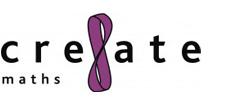Hair and Beauty
A collection of resources designed to provide ideas and inspiration for teaching mathematics in the context of hair and beauty. These resources have been selected as relevant to post-16 vocational learners who are working towards re-sitting GCSE Mathematics.
Going bananas considers some of the nutritional aspects of the Hair and Beauty course. The mathematics covers percentages, estimation, weighing, charts and estimating a mean from a grouped frequency table. Minimise or Supersize in resource students critically compare nutritional measures and calculate their daily energy requirements. The mathematics covers percentages, using formulae and data handling. Hair and beauty looks at different products used in the hair dressing industry and how to analyse customer reactions. The mathematics covered includes the data handling cycle, consideration of questions for a questionnaire and analysis of data. Cre8 Salon is a series of flexible activities that are designed to simulate some of the challenges of work in the context of a beauty salon.
View the MEI Contextualisation Toolkit
- ALL
- Group work
- Activity sheet
- Other
Group work
Hair and Beauty
This resource from Cre8ate maths is designed to help students develop their understanding of the data handling cycle. Initially students will match 14 questions with their answers, prompting discussion as some are not relevant to the topic and others could have multiple answers, but there is only one way to complete the task so that every card is paired. This task will also highlight the importance of providing a suitable format for answers to questionnaires.
A questionnaire is then taken home for completion by family or friends, and the results divided amongst groups of students for analysis, followed by representation in statistical charts.
Activity sheet
Going Bananas
In this Cre8ate maths topic students work out what a portion size looks like, find out whether they are eating enough fruit and vegetables and compare the costs of making and buying smoothies.
In How much is in a portion, students estimate weights of fruit and vegetables then weigh each item and calculate their percentage error.
Five-a-day explores the eating habits of the class, their data is collated and used to compare data handling representations and to estimate means from grouped data.
The smoothie challenge investigates whether they are good value for money and requires students to do calculations involving money, weight and volume.
Minimise or Supersize
In this resource from Cre8ate maths provides practical applications of mathematics to the nutritional element of the Hair and Beauty course. Students critically compare nutritional measures and calculate their daily energy requirements.
Initially students fill in the worksheet Can we eat what we like, to prompt a whole class discussion about the consequences of a bad diet. They then use the Sugar, salt and fat worksheet, to explore their perceptions of the amounts of these ingredients in a selection of everyday foods.
In Calculating Energy Requirements, pupils use a scientific formula and the Energy requirements fact card, to estimate their energy requirements and compare these to the guidelines for themselves or someone they know.
Cre8 Salon
This Cre8ate maths activity draws on research which has indicated that many trainees / school leavers who are employed in vocational positions struggle with the numeracy skills needed in the workplace.
Cre8 salon is a series of flexible activities that are designed to simulate some of the challenges of work in the context of a beauty salon. Mathematical connections involve logical thinking.
Other
Hair and Beauty (other sources of ideas)
A collection of resources which provide ideas and inspiration for teaching mathematics in the context of hair and beauty. The resources included in this collection require some adaptation to make them appropriate for the particular audience.


